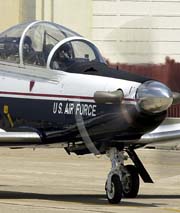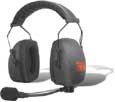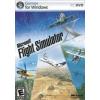Pilot Program
 Associate unit teaching the art of flying at South Georgia base
Associate unit teaching the art of flying at South Georgia base
By Staff Sgt. Sean P. Houlihan
In the early 1990s, the Air Force went through a downsizing period. Bases were closed, manpower authorizations were trimmed, and many squadrons with long and distinguished histories were deactivated. The 39th Flight Test Squadron was one of those units to be shut down, marking the eighth time the squadron had been deactivated since its inception in 1940.
But just like a cat with nine lives, the squadron, which had 22 aces in World War II and Korea, is up and running once again, this time with a new mission. The 39th Flying Training Squadron at Moody Air Force Base, Ga., stood up April 2, 2001, as an associate unit to Air Education and Training Command’s 479th Flying Training Group. Administratively, the Reserve squadron belongs to the 340th FTG at Randolph AFB, Texas.
Working side by side with their active-duty partners in the 49th FTS, 3rd FTS and 435th FTS, the unit’s reservists teach student pilots in the Introduction to Fighter Fundamentals and Joint Specialized Undergraduate Pilot Training courses. Reserve pilots support IFF training in the T-38C aircraft, while they support JSUPT in the Air Force’s newest trainer, the T-6 Texan II.
The T-6, which features a single, 1,100-horsepower engine, can reach a top speed of 350 mph. It has tandem seats, a pressurized cockpit and sophisticated electronics including a global positioning system for navigation.
 The 39th and 3rd at Moody AFB are the only two squadrons in the Air Force flying the T-6 to train both Air Force and Navy pilots.
The 39th and 3rd at Moody AFB are the only two squadrons in the Air Force flying the T-6 to train both Air Force and Navy pilots.
“It is very exciting for the unit to be able to fly a brand-new aircraft,” said Maj. Stephen Winn, 39th FTS operations officer. “What’s more exciting is the fact we are working with our active-duty counterparts to stand up a new operation and produce the next generation of pilots for the Air Force.”
April 26 marked a milestone for the squadron as it graduated the first class of 15 students — two Navy and 13 Air Force — from phase two of JSUPT. Afterward, the students progressed on to phase three training at other AETC bases.
“Our job as members of the reserve component is to augment the active-duty cadre and train pilots for the Air Force,” Winn said. “April 24 marked a historical first not only for the unit but the Air Force with these pilots finishing as the first class in the Texan II here at Moody.”
Winn was quick to point out that the 39th is just one piece of the pilot training pie. The Reserve has five other associate units — one in Oklahoma, one in Mississippi and three in Texas — flying T-38, AT-38, T-37 and T-1 aircraft.
“The AETC instructors are working their tails off right now,” Winn said. “There are nearly 500 trained and experienced Reserve pilots within associate units who each fly six days per month, minimum. This impressive instructor force is a major contributor to the AETC flying training mission. We’re just pleased to be able to help out.”
After a little more than a year, the major said he is happy with how things are going between his squadron and the 479th FTG.
“The relationship has been working brilliantly,” Winn said, “thanks to the quality of the reservists and the attitude of the active-duty guys, from the lowest level all the way up to the group commander. They make sure we are treated as an integral part of their operation. … and we are part of it through and through.”
“What they do, we do. Stand an active-duty instructor pilot and a Reserve instructor pilot side by side and you can’t tell them apart,” said Lt. Col. Kenny Dressel, 479th deputy group commander.
“They are a big part of the operation. Obviously, they augment the active-duty force and fill out the flying schedule to get the pilot trainees out the door. We couldn’t accomplish the mission without them.”
Dressel said that having the reservists available to help during the relocation of the active-duty 435th FTS from Randolph AFB to Moody last year was a blessing.
“The move from Randolph occurred with minimum loss of training,” he said. “The active-duty folks were in permanent change-of-station status, taking care of families and homes. The traditional reservists provided tremendous support, stepping up to the plate when we needed them. They were the student training shock absorbers, cranking out the sorties and answering our rally flag for help.”
Lt. Col. Jon Wrinn serves as the full-time flight operations officer for the 15 traditional reservists who conduct T-6 training. In addition to overseeing the scheduling of instructors, he ensures their training is up to date, paperwork is properly filled out and orders are cut. Wrinn said most of the instructors work more than the minimum requirement of six to eight days a month. In fact, many put in 22 to 25 days a month.
“The T-6 training mission works well with the citizen-airman concept,” he said. “Most of the instructor pilots are not here for the money but for love of country and military flying. It’s a rewarding job, being an instructor pilot, particularly at the undergraduate level.”
Wrinn said on days when the active duty is short-handed, he calls in pilots to work. Since many of the reservists live in the local area, they are able to respond on short notice.
Two reservists who put in more than the minimum number of days each month are Majs. Pat Broderick and Larry Branch. Broderick was an active-duty instructor pilot at Laughlin AFB, Texas, and Columbus AFB, Miss. Branch, also an active-duty instructor pilot, was stationed at Williams AFB, Ariz. and Laughlin.
“Larry and I bring a lot of experience to the undergraduate pilot training program,” Broderick said. “We are able to share our experience, both as instructors and operational pilots, with the students.”
For Broderick and Branch, a typical day begins with the two signing in with Wrinn and reporting to their respective flights for pre-mission briefs with student pilots. During the briefings, which last roughly 45 minutes, the instructors go over all aspects of the mission, including objectives, emergency procedures, weather conditions and safety precautions.
At that point, student and instructor go to the aircraft for a pre-flight inspection. Training flights last anywhere from an hour to an hour and a half and are followed by a debriefing. However, the mission doesn’t end there for Branch and Broderick. They still have to grade the students on every facet of the mission.
Once the process is complete, it’s time to start again.
“We are expected to come in and fly two, maybe three, flights a day,” Broderick said. “This not only fills out the training schedule for the day, but it frees up the active-duty pilots to accomplish their additional duties within the squadron.”
Broderick said that as students progress through the contact, instrument, navigation and formation blocks of the training, the role of the instructor pilots changes.
“Initially we are hands-on, setting the solid base for what they need to know,” Broderick said. “As they progress through the blocks of training, the talking and hands-on training tapers off, giving them the feeling of ownership.”
In addition to bringing a lot of experience to the table, reservists add stability to the pilot training program. Unlike active-duty instructor pilots, who typically move every two or three years, reservists tend to stay at a location for a long time.
“Traditionally, we don’t move around much,” Branch said. “We have a lot of corporate knowledge to offer. That’s one of the benefits of being a reservist. I’m able to fly a cool new aircraft and be close to my home while still making a long-term commitment to not only the unit but to the AETC mission at Moody.”
Lt. Col. Bruce M. Juselis, 3rd FTS commander, values the reservists’ contributions.
“Pilot training is a fantastic mission. Flying a new airframe is just a bonus,” Juselis said. “The reserve instructors have been in lock-step with my active-duty instructors since day one, forming the foundation for future pilot training for 30 years to come right here at Moody.
“To be training pilots for the Air Force, in a brand-new aircraft, as part of a completely new flying operation is a success story, a Total Force success story,” Juselis said. “This has been a huge undertaking for AETC, and AFRC pilots from the 39th Flying Training Squadron have been a big part of it.”
Additional T-6 Photos
T-6 Photos + Study Material T-6 Aircraft Spec Sheet T-6 Article and More Photos


















